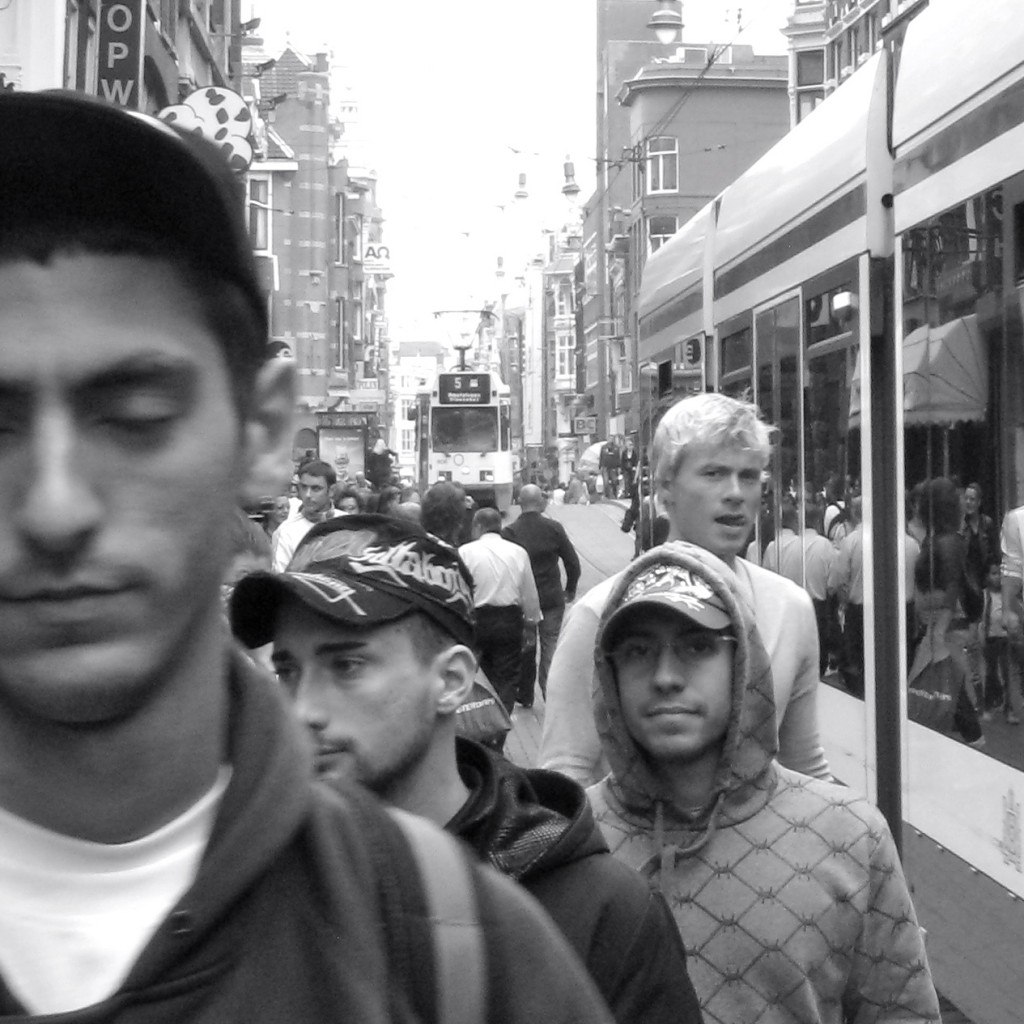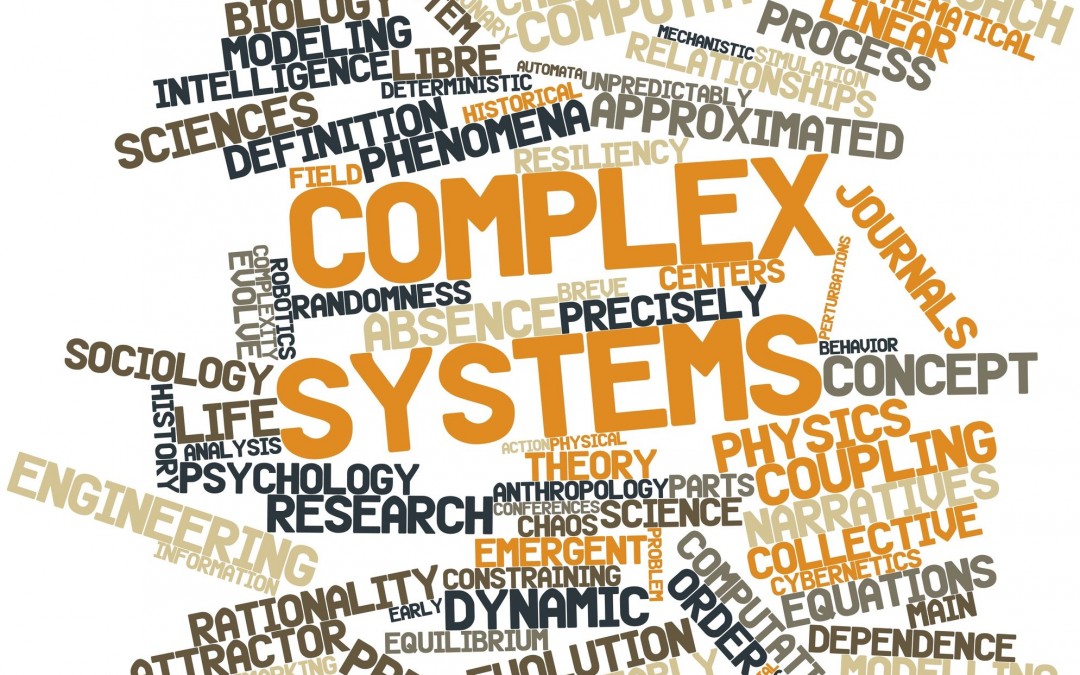Almost every day, but certainly any week I’m surprised to find people state “this is complex” or “this is complex adaptive system” or “we live in a complex world”. It is not only novices in the field, politicians, audience-hungry businessmen or profit-seeking consultants that make the claim, some very well known names, even guru’s that should know (do know?) better, commit the crime. I know, over the last 10, maybe 15 years, using the C-word has become very popular. The biggest rise was after we all survived the Y2K bug and around 2002 one could hardly open a newspaper, watch television or have a conversation at the office and the complexity word could be heard.
I might happen to have noticed the rise probably with more early interest than many others as I’ve been active in the complexity field since 1991 as described in my “provenance” opening blog on PNI2. So complexity and complex adaptive systems are household notions for me for almost 25 years now and familiar terms for quite some time before that.
False claims of complexity
Despite those credentials you might wonder what gives me the authority to make the statement that titles this post. Well, I will admit right away, there are some exceptions, but these are so rare or artificial or irrelevant that the claim I make holds for any system or situation or problem or challenge a very large majority of humans – as citizen or professionals – will encounter in their life. So I plead guilty, the title was to attract attention, but is largely true also, at least practically.
But still, systems that are often stated to be complex, such as the economy, nature, innovation, living creatures, the whole world, a city, traffic flow, human resource management, marketing, etc, etc. are in fact not complex. What I mean by that is not to deny that these systems have complex aspects or adaptive features, but the general statement that they are complex is simply false. Practically any system one can envision has order in it and most – if not all – have chaotic aspects.
The city as an example

Kevin Dooley, 2008. Shared under (CC BY 2.0). No changes made. Original at https://www.flickr.com/photos/pagedooley/4265213051.
Let’s – for example – have a look at a city. Yes, it is true, no-one can predict how the city as a whole will develop over time. So, for that aspect (a more aspects) the city is complex and it is also safe to state that the city is a complex-adaptive system at that level, which simply means the city can (within limits) cope with change.
But that’s only a very small part of the picture. At any time of day there are accidents in the city (car accidents, fires, collapsing buildings, etc), so while the city as a whole is a complex adaptive system there is chaos in the system too. It ‘d better be as to recover from those accidents the city needs to draw on its adaptiveness to recover. That is why one can say the city is resilient (to a certain extent) for disasters.
And there is order in the city too. Besides the biological order of day/night and the seasons, there is much much more. Street patterns are often quite regular, traffic rules and lights usually make traffic flow orderly (yes, I know, apart from Rome). Habits people have, such as keeping right on the board-walk makes life much easier for both locals and tourists. And going out for breakfast makes businesses relatively predictable, and …. There are probably literally zillions of examples to put forward. How much order can you find in the photo? I guess a lot if you try. How much order can you find in the place where you live or work? Actually I tend to believe that a city’s properties, aspects, behaviours largely fall within the realm of order. It better be as else it would be very hard to live in such a city.
Taking the reverse view
Before ending this post, another issue must be dealt with. I also often encounter people that assume that though order can be local, the system gets complex towards system level. So, for example, a street and the traffic on it are (usually) ordered, but the city as whole is complex. Wrong again I’m afraid. There can be very tiny, tiny, normal, large and very large complex adaptive sub-systems such a bird colony, a neighbourhood with a specific but resilient culture or a traffic system such as a metro in the city. And yet, yes, these subsystems have ordered and chaotic aspects too. It might be a bit mind-blowing to imagine this whole intermingled system of systems with ordered and chaotic and complex aspects/properties and subsystems with ordered and chaotic and complex aspects/properties and so on. And it probably it gets even worse when one realizes that system and subsystems are not neatly aligned, but form one big and small confluence of interrelated aspect systems.
Still there?
Of course now we could talk about the whole not being a mess, but a dissipative, coherent messy whole, but that is far beyond a productive goal for this post. All I hope to achieve is the next time you hear someone say “this is complex”, you think that’s probably true, partly. Next you can try to find out at what level or for what aspects this complexity holds and try to find order, find chaos, find more order, find boundaries (also a form of order, or an ordering mechanism).
And when you hear someone claim “that’s simple, A follows from B” you try to find some aspects that are not linear, you try to find chaotic aspects, you try to list some complex issues (ones that defy analysis and/or prediction) or identify feedback loops.
I guess there are many more simple examples to explain the non-complexity of many things often claimed to be complex. And there are undoubtedly good examples to give where apparent or assumed ordered/linear systems/behaviour has complex and chaotic aspects. I have used the city as an example, but all that is said here also applies to narrative or cognitive complexity. These are saved for future blogs.
Meanwhile, can you share examples you use? Narrative, physical or others. The PNI community might need them.


Really glad to see this discussion finally taking place here in the open. That is exactly what we hoped for when we started PNI Institute.
On topic: some 20 years ago I read a sentence “Drawing a line generates the need to defend it”. Guess it was in The tree of knowledge: The biological roots of human understanding by Humberto Maturana and Francisco Varela. At the time as was very impressed by Beer’s Viable Systems model until I realized that in that model there are no lines in in the boxes but just between the boxes and those lines stood for “communication”. Ever since the VSM is my all time favourite organisational diagnosis model.
Years later when I first encountered the Cynefin model I immediately questioned why there were boundaries between the domains. Yes they were bend, but they were lines. So what do they defend? Since the advent of the Confluence Sensemaking framework, that contains no lines/domains, I mainly use the CSF and the VSM. Recently I discovered that I had seen very early versions of the Cynefin model in Knowledge Horizons (ed: Charles Despres, Daniele Chauvel, 2000). Back then Cynefin was a 2×2 matrix. Maybe Ralph should have a look to see which lines can go out first :-).
Nothing is ever “just” complex. I agree, but I will continue to say: “This is complex”, knowing that on a more granular level properties change.
Doens’t it really come down to a discussion or recognition of the importance of granularity? Faced with a context, a problem, or a city we must find that as we cut it into smaller pieces, some aspects are complicated, some complex, some chaotic and some are just dead simple 😉 Just as it has been re-interated several times here in the post as well as in the comments.
Also, Bruce’s comment: “…each of us brings the singular view of the world born of our own experiences.”, really brings forward that what some might see as simple, another person might well find complicated.
So much for everybody agreeing and padding each others backs; I don’t really think it is justifiable to thump those over the head that say: “This is complex”, because as a whole many systems appear to many people as complex – and often they are, because the plethora of sub-systems, dynamics, constraints, boundaries, agents, and agendas coalescing is obscure and unpredictable. But as we investigate on finer granular levels, distinctions can be made, and we realise that nothing is ever “just” complex.
Ahh, yes…. I do agree that any such framework tends to make separations and distinctions that are not the same as the full reality. I know that Ralph Stacey essentially renounced his own well-known (and still widely-referenced) “agreement and certainty matrix.” Ralph’s concern was just as you explain, Cynthia- that observers would consider a conclusion about their current situation, and pin it down to a single and static point in the two-dimensional matrix space. Ralph realized that we are always dealing with multiple realities… We may be certain about this aspect of the situation, and uncertain about that. Or that even a single aspect of the system we are observing and trying to work in, may simultaneously be both this…and that. And maybe…. That too. This reminds me of the famous “Heisenberg uncertainty principle” in subatomic physics. By our act of observing an electron, we can know its position or its direction. We can not know both simultaneously.
Our universe simply IS… obvious, and complicated, and complex, and chaotic… all…ways…always. The presumption of coherence and predictability that we seem hard-wired to seek, depends on how we see the world. The patterns that you may see, the conclusions you may reach… Will not be exactly what the next person will see. I am here. But I am going… There.
Nice distinction and example Harold. I too get frustrated hearing people refer to things as complex, when in fact they may be complicated. I try and remind myself that not everyone is familiar with this model or the lense that I am looking through.
Hooray thanks for the comment Bruce! I would say that when we say “through our perspectives as observers, that the thing seems clear, complicated, complex, or chaotic” we don’t need to use the word OR there. I think what Harold was getting at (and I agree) is that when we characterize a system as ONLY complicated, complex, or chaotic (and we do that by calling it “a complex system”) we simplify our thinking to a dangerous degree. Through our perspectives, whether we are observers or participants or both, I think we can challenge ourselves to see things as complex AND complicated AND chaotic; and then start making sense of what that means in practice (which is far more interesting).
Ahh, yes…. I do agree that any such framework tends to make separations and distinctions that are not the same as the full reality. I know that Ralph Stacey essentially renounced his own well-known (and still widely-referenced) “agreement and certainty matrix.” Ralph’s concern was just as you explain, Cynthia- that observers would consider a conclusion about their current situation, and pin it down to a single and static point in the two-dimensional matrix space. Ralph realized that we are always dealing with multiple realities… We may be certain about this aspect of the situation, and uncertain about that. Or that even a single aspect of the system we are observing and trying to work in, may simultaneously be both this…and that. And maybe…. That too. This reminds me of the famous “Heisenberg uncertainty principle” in subatomic physics. By our act of observing an electron, we can know its position or its direction. We can not know both simultaneously.
Our universe simply IS… obvious, and complicated, and complex, and chaotic… all…ways…always. The presumption of coherence and predictability that we seem hard-wired to seek, depends on how we see the world. The patterns that you may see, the conclusions you may reach… Will not be exactly what the next person will see. I am here. But I am going… There.
Well… I am not sure I would characterize complexity and the complex dynamics of certain systems in quite the same way. We can describe the ways the system and the agents/components in it behave and interact. But we must acknowledge that it is always – and only – through our perspectives as observers, that the thing seems clear, complicated, complex, or chaotic. Of course, each of us brings the singular view of the world born of our own experiences.
Is a city “complex” in its dynamics and evolution? In some ways, and at some times… I’d say yes. But we know there is order amidst the chaos. Most drivers in New York City stop most of the time for a red light, and go on the green. They operate within the confines and boundaries of the system. But the individual interactions of the drivers as they maneuver along the crowded streets at rush hour- go, or no go; pass here; around that there; take this turn for a time advantage that might not really happen. These multiple iterated cycles of perception, sense- and decision-making, and action, often yield complex patterns even within the boundaries of the roads and traffic signals.
What are the degrees of freedom for the agents in the system? What are the strengths and vulnerabilities of the constraints and boundaries that help direct the system?
Is the flow of traffic complex? Or is it understandable, predictable, even controllable, from the perspective of some attainable level of knowledge and understanding?
What do you think?
Thanks for your comment. I’m the first to admit that I occasionally still make the mistake myself. As a goal I admire your “never again” 🙂 If you find a way to achieve that level I’m all ear (is that a Dutch saying only? I means: you will have my full attention.).
I have worked with complexity for some years and really appreciate the nuances you have explained here. As a result, I will never again say something is complex in a manner that suggests the entire ‘something’ is complex.